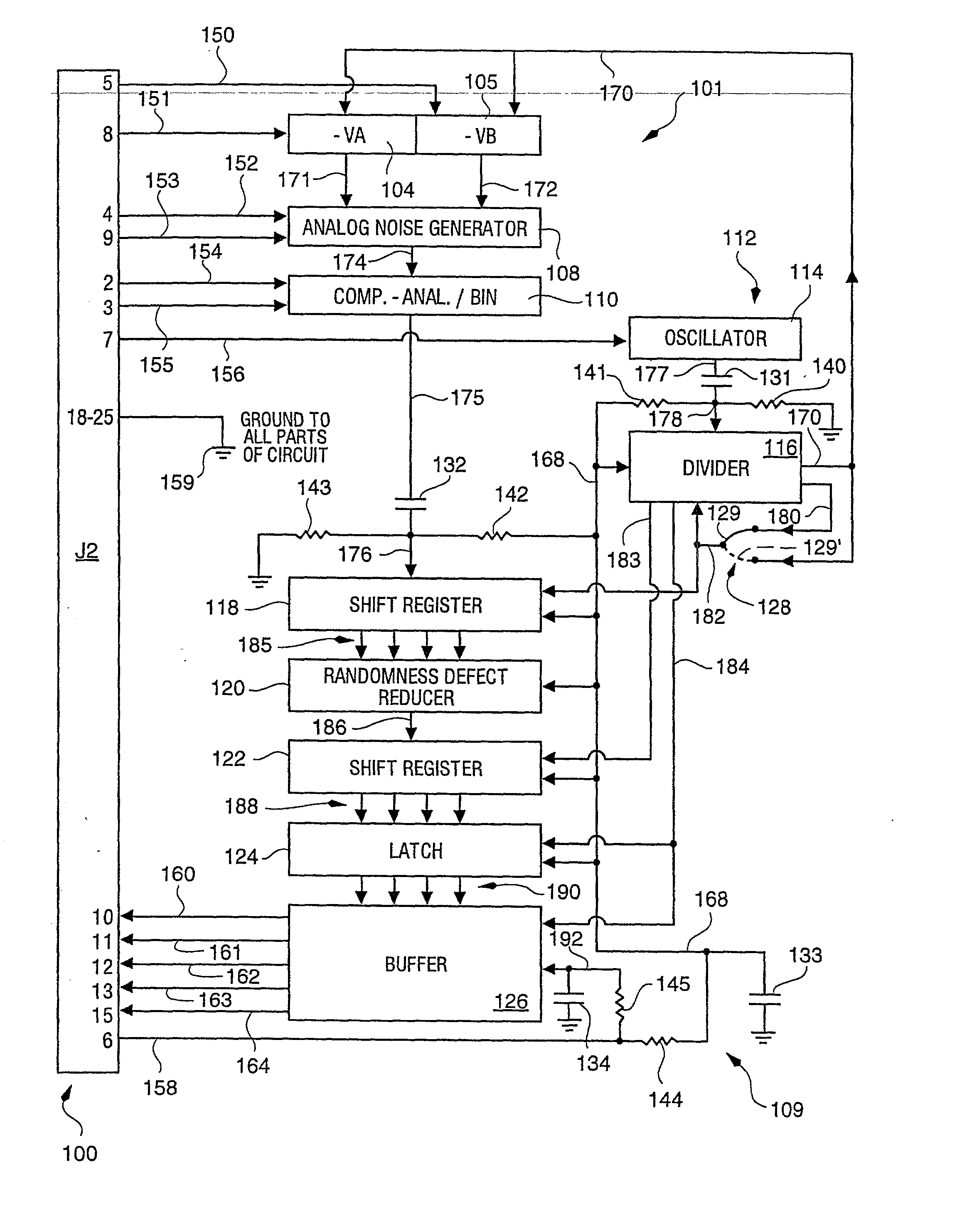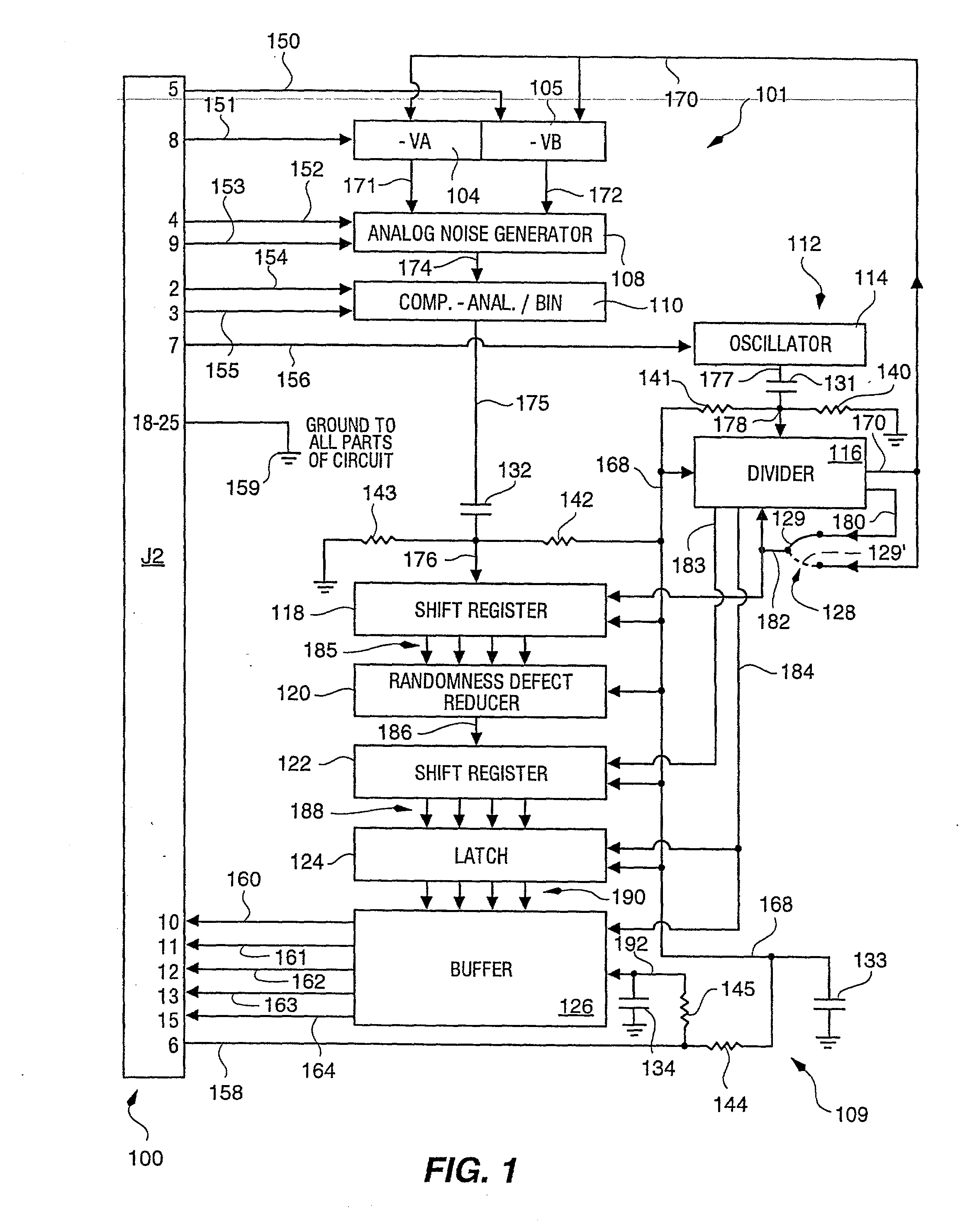Random number generator and generation method
a technology of random number generator and generation method, which is applied in the field of random number generator, can solve the problems of few "random number generators" on the market today that can generate a true random number, relatively slow,
- Summary
- Abstract
- Description
- Claims
- Application Information
AI Technical Summary
Benefits of technology
Problems solved by technology
Method used
Image
Examples
Embodiment Construction
[0065] FIG. 2 is a detailed circuit diagram of the charge pump 105 utilized in the preferred embodiment of the invention. Charge pump 105 includes integrated circuit IC5, capacitors 210-213, and resistors 220 and 222. Charge pump 105 could also be considered to include other elements, such as capacitor 310 in FIG. 3; however, capacitor 310 has been made a part of analog noise generator 108 so that the circuits for the two charge pumps 104 and 105 are identical, which simplifies the discussion. Thus, it should be understood that, in the present disclosure, whether a particular component is included in one subcircuit rather than another is often a matter of convenience.
[0066] Integrated circuit IC5 preferably is a CD74HC4053E triple 2-channel analog multiplexer available from Harris Semiconductor. This is a CMOS low-power chip, which allows the system to be run off the power available on the parallel port 1150 of a computer. For this and the other integrated circuits shown in the draw...
PUM
 Login to View More
Login to View More Abstract
Description
Claims
Application Information
 Login to View More
Login to View More - R&D
- Intellectual Property
- Life Sciences
- Materials
- Tech Scout
- Unparalleled Data Quality
- Higher Quality Content
- 60% Fewer Hallucinations
Browse by: Latest US Patents, China's latest patents, Technical Efficacy Thesaurus, Application Domain, Technology Topic, Popular Technical Reports.
© 2025 PatSnap. All rights reserved.Legal|Privacy policy|Modern Slavery Act Transparency Statement|Sitemap|About US| Contact US: help@patsnap.com



